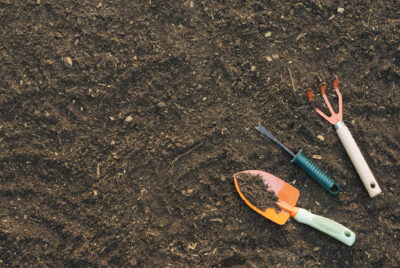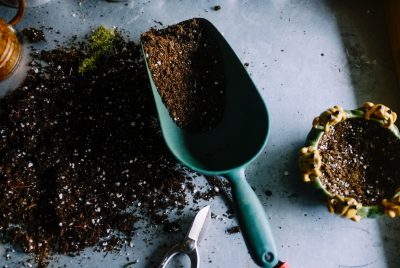Spring Gardening: Embracing Nature’s Rejuvenation
Springtime is a season that breathes new life into the world around us. As an avid gardener, I cannot help but get excited about the opportunities it brings. The air is filled with a sense of anticipation, and the garden becomes a canvas for vibrant blooms and lush greenery. In this article, I will take you on a journey through the joys of spring gardening, focusing on the significance of pollinators during this season. Along the way, I will provide helpful suggestions to make your spring gardening experience a delightful and fruitful one.
Embracing the Joy of Springtime
Spring is a time when nature awakens from its winter slumber. The once barren landscapes are now adorned with a kaleidoscope of colors, as flowers burst forth in full bloom. It’s a spectacle that never fails to captivate the senses and fill the heart with joy. As a gardener, witnessing this transformation is a true delight. The sight of cherry blossoms, tulips, daffodils, and other spring blooms brings a sense of awe and wonder.
Aside from the visual feast, spring also invites us to indulge in various outdoor activities. The weather becomes more inviting, beckoning us to spend time amidst nature. Whether it’s tending to the garden, taking leisurely walks, or enjoying a picnic in the park, spring offers a plethora of opportunities to engage with the natural world.
The Buzz of Pollinators
Spring is a crucial time for pollinators, those diligent workers that facilitate plant reproduction. Bees, butterflies, hummingbirds, and other insects and animals take center stage during this season. Their buzzing wings and fluttering presence remind us of their vital role in maintaining the ecological balance.
Pollinators play a significant part in the production of fruits, vegetables, and seeds. They transfer pollen from the male parts of flowers to the female parts, allowing plants to produce fruits and set seeds. Without their assistance, many plants would struggle to reproduce, leading to a decline in biodiversity and the availability of food.
Creating a Pollinator-Friendly Garden
To support and attract pollinators to your garden, it’s essential to create a welcoming environment for them. Here are some tips to make your garden a haven for these industrious creatures:
- Choosing native plants: Native plants are well-adapted to the local environment and provide food sources specific to local pollinators. Incorporating a variety of native flowers, herbs, and shrubs in your garden will ensure a continuous supply of nectar and pollen.
- Providing water sources: Pollinators need access to water for hydration and reproduction. Consider placing shallow dishes with water or installing a small birdbath in your garden to serve as a refreshing oasis for these tiny visitors.
- Creating nesting habitats: Some pollinators, like solitary bees and butterflies, require suitable nesting sites to lay their eggs and complete their life cycles. Incorporate features such as bee houses, butterfly boxes, or specific plant varieties that offer suitable nesting opportunities.
- Avoiding pesticides: Pesticides, particularly those containing neonicotinoids, can be harmful to pollinators. Opt for organic pest control methods and minimize the use of chemicals in your garden to provide a safe environment for pollinators to thrive.
Suggestions for Spring Gardening
When Spring comes around, you will start preparing your gardening for a frutiful harvest season. Here are some suggestions to ensure a successful and enjoyable experience:
- Preparing the soil: Before planting, prepare the soil by removing weeds, loosening the earth, and adding organic matter such as compost or well-rotted manure. This provides a fertile foundation for your plants to grow.
- Selecting appropriate plants: Choose plants that are suitable for your local climate and soil conditions. Consider factors such as sunlight requirements, water needs, and plant hardiness to ensure the best chance of success. You might already know what you want to grow in your garden but here is a list of ideas and tips on which vegetables grow best in Spring!
- Planting and spacing: Follow the recommended planting instructions for each plant, considering their mature size and spacing requirements. This allows proper air circulation and prevents overcrowding, reducing the risk of disease and promoting healthier growth.
- Regular watering and maintenance: Keep a close eye on your garden’s water needs and provide regular irrigation when necessary. Additionally, remove weeds, monitor for pests, and provide appropriate support, such as stakes or trellises, to keep your plants thriving.
Enhancing the Beauty of Your Garden
While a bountiful harvest is rewarding, a beautiful garden can also be a feast for the eyes. Consider these tips to enhance the aesthetic appeal of your spring garden:
- Incorporating diverse plant varieties: Create visual interest by mixing different flower shapes, colors, and heights. Combine annuals, perennials, and bulbs to provide continuous blooms throughout the season.
- Adding garden ornaments and structures: Install decorative elements such as bird baths, sculptures, or trellises to add personality and focal points to your garden. These can serve as artistic accents while attracting additional wildlife.
- Creating focal points: Designate specific areas within your garden that draw attention. It could be a seating area, a water feature, or a beautifully arranged flower bed. Focal points add depth and create a sense of purpose within your garden’s design.
Enjoying the Fruits of Your Labor
As the gardening season progresses, you’ll begin to reap the rewards of your efforts. Here are some ways to savor the fruits of your labor:
- Harvesting and using homegrown produce: Enjoy the taste of freshly picked fruits, vegetables, and herbs from your own garden. Incorporate them into delicious meals, salads, or refreshing beverages, relishing the flavors of your homegrown bounty.
- Sharing your garden’s bounty: Spread the joy of gardening by sharing your surplus produce with friends, family, or neighbors. Not only does this foster a sense of community, but it also allows others to appreciate the rewards of gardening.
- Hosting garden gatherings: Invite loved ones to celebrate the beauty of your garden. Organize picnics, tea parties, or barbecues amidst the vibrant surroundings, creating unforgettable memories.
Conclusion
Spring gardening offers a splendid opportunity to connect with nature, celebrate the wonders of pollinators, and nurture your own green oasis. By following the suggestions outlined in this article, you can create a thriving and pollinator-friendly garden that brings you joy, beauty, and a sense of fulfillment. So, embrace the season of rebirth, roll up your sleeves, and let the magic of spring gardening unfold before your eyes.
FAQs
1. How long does it take for a spring garden to bloom?
The time it takes for a spring garden to bloom largely depends on various factors, including the types of plants you’ve chosen, local climate conditions, and the plant’s growth cycle. Generally, you can expect to see the first signs of blooms within a few weeks to a couple of months after planting.
2. Can I attract pollinators to my garden if I live in an urban area?
Yes, even in urban areas, you can attract pollinators to your garden. Opt for pollinator-friendly plants, create small habitats like bee houses or butterfly-friendly areas, and provide water sources. Even balconies or rooftop gardens can become havens for pollinators.
3. How do I know if a plant is native to my region?
You can consult local plant nurseries, botanical gardens, or agricultural extension offices to obtain a list of native plants suitable for your region. Additionally, there are online resources and plant identification apps that can assist you in identifying native plants.
4. Can I use artificial pesticides and still have a pollinator-friendly garden?
Artificial pesticides, especially those containing neonicotinoids, can be harmful to pollinators. It’s best to avoid their use if you want to create a truly pollinator-friendly garden. Opt for organic pest control methods or seek alternative solutions like companion planting and natural predators.
5. How can I extend the blooming period in my spring garden?
To extend the blooming period in your spring garden, choose a variety of plants with different bloom times. Combine early, mid, and late-blooming species to ensure a continuous display of flowers. Additionally, deadhead spent blooms regularly to encourage further flowering and remove any potential obstacles to new blooms.





